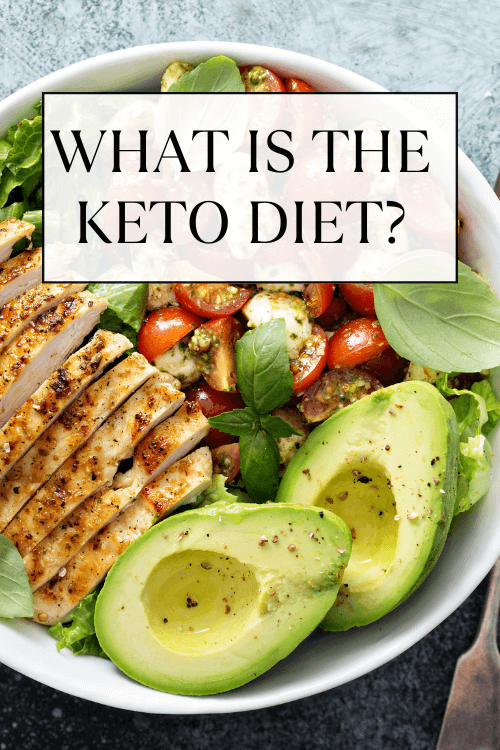The ketogenic diet,commonly known as the keto diet, is more than just another food trend. It’s a radical shift in how you fuel your body, designed not only for weight loss but also for improving metabolic health.
In this guide, we’ll cover everything from the scientific foundation of keto to what you can eat, how to start, and the powerful changes you can expect.
We’ll also integrate authentic, firsthand experience from someone who used keto to beat prediabetes, lose fat, and improve overall health. Because science is one thing, but real-world success is where this diet truly shines.
What Is the Keto Diet? Understanding the Basics
At its core, the keto diet is a low-carbohydrate, high-fat, moderate-protein diet that shifts your body’s metabolism from relying on glucose to burning fat for energy. This metabolic state is called ketosis.
When you drastically reduce your carbohydrate intake, usually to under 50 grams per day, your liver starts converting fat into molecules called ketones, which serve as an alternative fuel source.
This process typically begins after a few days of carb restriction and leads to a range of benefits, from improved energy to reduced appetite.
This isn’t just calorie-cutting, it’s biochemical recalibration. Your body stops depending on quick energy from carbs and begins running on sustained fat energy.
How Keto Works: The Science Behind Ketosis
Normally, your body uses glucose from carbs for energy. When you restrict carbs:
- Your insulin levels drop.
- Your glycogen stores deplete.
- Your liver begins to produce ketones from fatty acids.
- Your body starts using ketones and stored fat for energy.
This process doesn’t just help with weight loss. It also improves insulin sensitivity, lowers inflammation, and may help with neurological and metabolic conditions.
The hormonal and metabolic changes triggered by keto are especially beneficial for those with prediabetes, type 2 diabetes, metabolic syndrome, and obesity.
Keto Diet Benefits Backed by Science
The keto diet is supported by growing research in the areas of weight management, blood sugar regulation, and neurological health. Here are some well-documented benefits:
Rapid and Sustained Weight Loss
Because your body burns fat as fuel, many people experience rapid initial fat loss, especially around the abdomen.
Improved Blood Sugar and Insulin Levels
Reduced carb intake helps stabilize blood glucose, a key advantage for anyone with blood sugar issues.
Appetite Suppression
Ketones have a natural appetite-suppressing effect, making it easier to stick to the diet without feeling hungry.
Mental Clarity and Focus
Many keto users report improved cognitive function and clarity as their brain adapts to running on ketones.
Heart Health and Lipid Profile
Though high in fat, keto has been shown to increase HDL (good) cholesterol and lower triglycerides in many individuals.
What to Eat on Keto: The Approved Foods List
One of the most important factors for keto success is knowing what to eat and what to avoid. Here’s a quick breakdown.
Eat Plenty Of:
- Fatty meats (beef, lamb, pork)
- Poultry and eggs
- Fish (especially salmon, sardines, mackerel)
- Full-fat dairy (cheese, butter, heavy cream)
- Healthy oils (olive, coconut, avocado)
- Leafy greens (spinach, kale, arugula)
- Cruciferous vegetables (broccoli, cauliflower)
- Avocados, nuts, and seeds
Avoid:
- Bread, pasta, rice, oats
- Pastries, sugar, soda, fruit juices
- Beans and lentils
- High-sugar fruits (bananas, apples, mangoes)
- Root vegetables (potatoes, carrots)
- Processed snacks and low-fat diet products
Sticking to these food choices will ensure your body stays in ketosis and continues to burn fat efficiently.
Getting Started with Keto: What You Need to Know
Beginning a keto diet can feel overwhelming, but a few key principles can make the transition smoother:
Track Your Macros
The standard keto macronutrient ratio is:
- 70–75% fat
- 20–25% protein
- 5–10% carbs
Use apps like MyFitnessPal or Cronometer to ensure you’re on track.
Prepare for Keto Flu
During the first week, some people experience symptoms like fatigue, brain fog, or irritability—this is the keto flu, caused by electrolyte imbalances. Combat it with hydration, sodium, potassium, and magnesium.
Start Simple
Stick with meals you enjoy and don’t overcomplicate them. Scrambled eggs, grilled meats, salads with olive oil, and steamed veggies are great starting points.
My Keto Journey: Real Results That Made a Difference
Here’s where theory meets practice. Many people turn to keto when traditional methods fail or when urgent health changes are needed.
So I decided to try it for 90 days. The results: I lost about 5 kg and, most importantly, my fasting blood sugar went from 120 to below 100.
These changes aren’t just numbers on a scale; they represent better long-term health, more energy, and reduced risk of chronic disease. This experience echoes what many others have found: keto works when done correctly.
How Keto Combines with Fasting for Even Faster Results
One of the most powerful pairings in the health world is keto + intermittent fasting (IF). IF involves eating within a specific window, commonly 16:8 (fast for 16 hours, eat for 8), which accelerates fat burning and deepens ketosis.
When your body is already fat-burning from keto, adding a fasting period forces it to tap deeper into fat stores.
If you want to lose weight or lower your blood sugar levels, I would recommend trying the keto diet. And if you want fast results, you can combine it with fasting.
Many people report hitting plateaus and then breaking through simply by combining the two methods.
Potential Risks and Side Effects of Keto
Like any major lifestyle change, keto comes with potential drawbacks. While many are temporary, it’s important to be informed.
Short-Term Side Effects
- Keto flu (headaches, nausea, fatigue)
- Constipation (due to low fiber)
- Bad breath (a sign of ketosis)
Long-Term Considerations
- Micronutrient deficiencies (if the diet is unbalanced)
- Elevated LDL cholesterol in some individuals
- Social and dietary restrictions
That said, many of these can be mitigated with planning, supplementation, and medical guidance.
Who Should Avoid Keto?
Keto is not ideal for everyone. Avoid or consult a healthcare provider if you:
- Are you pregnant or breastfeeding
- Have type 1 diabetes
- Have a history of eating disorders
- Suffer from liver or kidney conditions
Keto is powerful, but it’s not universal. Always work with a medical professional, especially when dealing with chronic conditions or medications.
FAQ: What Is the Keto Diet?
What is the keto diet?
The keto diet, short for ketogenic diet, is a low-carb, high-fat eating plan that shifts your body into a metabolic state called ketosis, where fat becomes the primary fuel source instead of glucose.
It’s known for promoting fat loss, improving insulin sensitivity, and enhancing mental clarity. This diet is especially helpful for those looking to control blood sugar, lose weight, or manage metabolic conditions like prediabetes or type 2 diabetes.
What do you basically eat on a keto diet?
On a keto diet, your meals will center around high-fat, moderate-protein, and very low-carb foods. Here’s a simple breakdown:
- Yes: Fatty meats, eggs, cheese, butter, nuts, seeds, non-starchy vegetables, healthy oils, avocados.
- No: Bread, pasta, rice, sugary snacks, soda, most fruits, and starchy vegetables like potatoes.
The goal is to keep your carbohydrate intake below 50 grams per day, so your body stays in ketosis.
What is the basic rule of a keto diet?
The core rule of the keto diet is simple but strict: drastically limit carbohydrates and prioritize fats. A standard keto diet follows this macro ratio:
- 70–75% fat
- 20–25% protein
- 5–10% carbs
Following this rule shifts your metabolism from burning glucose to burning fat for energy, leading to weight loss and better blood sugar control.
What does a keto diet consist of?
A typical keto meal plan consists of:
- Breakfast: Scrambled eggs with cheese and avocado
- Lunch: Grilled chicken salad with olive oil dressing
- Dinner: Salmon with roasted broccoli cooked in butter
- Snacks: Macadamia nuts, hard-boiled eggs, cheese cubes
Drinks should be water, black coffee, or unsweetened tea. Avoid juice, soda, and alcohol that contain sugar or carbs.
Is keto good or bad for you?
The answer depends on the person. Keto can be very beneficial for weight loss, controlling blood sugar, reducing appetite, and improving certain health markers.
However, it can also have side effects, especially if not done correctly, such as nutrient deficiencies or increased cholesterol in some people.
For most healthy adults, a well-formulated keto diet is safe and effective. But it’s crucial to consult a healthcare provider if you have existing medical conditions.
Key Takeaways: What Is the Keto Diet?
If you’re looking for a high-impact dietary strategy that does more than just help you shed a few pounds, the ketogenic diet might be exactly what you need.
Whether your goal is to manage blood sugar, lose weight, improve energy, or simply reset your metabolic health, keto provides a powerful framework.
The key is consistency, preparation, and understanding your body. Keto isn’t a magic bullet, but it is a metabolic game-changer.

